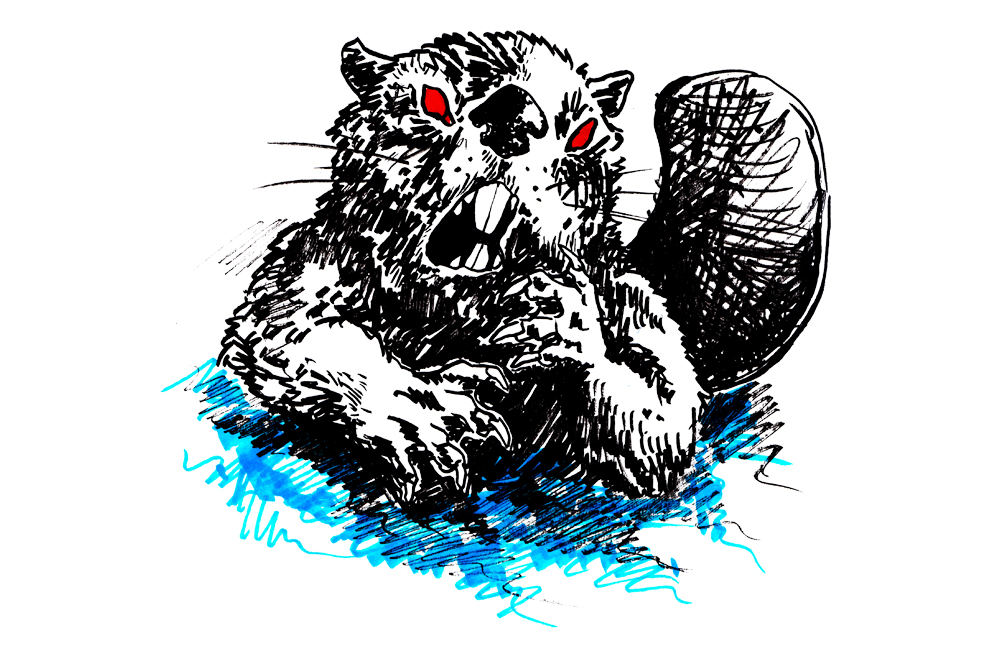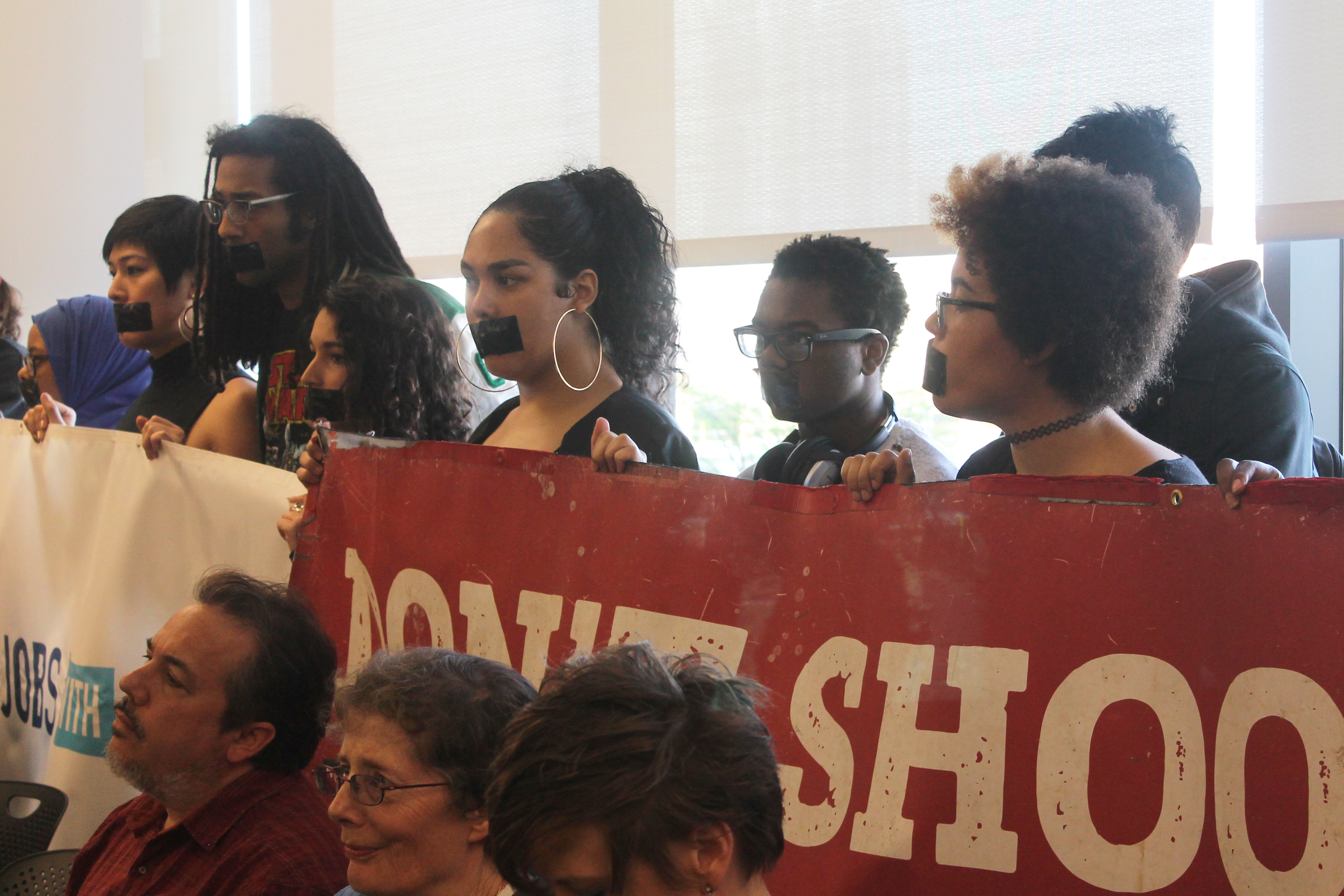Oregon is a hotbed of supernatural activity, and no city in this state is as paranormally turgid as Portland. Having grown from a simple but isolated logging outpost, Portland is rife with obscene secrets.
Maybe you’ve already heard about the Shanghai tunnels or the ghost of Old Town Pizza. But what happens when you break the placid surface of two-bit legends and dive into the churning, suffocating vastness that is true fear?
Forget the hackneyed rumors and, before you step outside tonight, know you will be walking among these eldritch shades:
The Haunted Chicken Cart
Slavic mythology is rife with tales of Baba Yaga, a witch who flies around in a mortar and either damns or aids those who encounter her. Perhaps one of Baba Yaga’s most distinctive qualities is her hut, which stands on two long chicken legs.
It might sound absurd, but reports of a Baba Yaga-like figure in Portland date as far back as the mid-20th century, when Oregon was enjoying both an economic and population boom. Tales of a strange, haggard woman hovering and chanting in dark alleyways and her wet, throaty cackle were common at this time.
Oddly enough, the modern, local version of this tale puts the infamous witch in a food cart rather than a hut. Ironically, in most collected stories, the surviving teller is insistent that the cart serves fried chicken exclusively.
Those who have been lucky enough to order say the chicken is either succulent or simultaneously undercooked and burnt.
The quality rarely depends on how customers treat Baba Yaga, but seems dependent on her whims.
There is no agreed upon location of the cart—it is prone to disappearing at will or lumbering away after an order has been doled out—though sightings are most common in North Portland.
The Willamette “Big Brown” Beaver
Most large bodies of water are teeming with monsters. Scotland has the Loch Ness monster, and Lake Champlain on the United States-Canadian border has Champ, but neither of them compare to Big Brown, an abnormally large and uncharacteristically aggressive beaver that has stalked the Willamette River for as long as memory permits.
The first Big Brown sighting was reported in the late 1940s, when the Willamette Valley Project was first getting underway. Prior to the project, the river was prone to flooding. The Willamette Valley Project aimed to tame flooding with 13 strategically placed dams. Unfortunately, in tampering with the natural flow of the river, the workers awoke something: Big Brown.
Soon after construction on the dams began, so did the attacks. Workers, many of whom were members of the United States Army Corps of Engineers, were driven from their posts by “a big brown beaver with red eyes, all wily and gnashing.”
After the third death, a team of dam workers and concerned citizens set out to hunt the creature. Word of the deaths had spread, and over 200 people helped to patrol the Willamette. There was no sign of Big Brown, and the attacks continued. Four months after the project began, key areas of the river were dynamited. The attacks ceased and dam construction proceeded in peace.
This is not the end of Big Brown’s story, though. No body was recovered, and there are still sightings to this day of a giant beaver sunning itself on the shores of Collins Beach, close to what is believed to be its home in North Portland.
The Fred Durst of Laurelhurst Park
This tale begins on Oct. 16, 1999 when the Family Values Tour performed at the then-Rose Garden Arena. Among the performers present were such acts as Korn, Filter, Redman and Method Man and, of course, Limp Bizkit.
The story goes that after the Portland show concluded, Durst wanted to see more of the city. His local handlers showed Durst and his entourage several notable Portland locales, but for some reason the tour ended at Laurelhurst Park.
The park was once home to the Portland Rose Festival Queen’s Coronation event, and the main event itself was once hosted on the park’s pond. The event was discontinued in 1921 due to a scandal involving poor float construction that resulted in a drowning death.
Since then the public park’s shallow pond has possessed a grim history, not the least of which being apparition sightings and reports of reflections that move autonomously on the water’s surface.
It would seem that one apparition took a liking to the countenance of one Mr. Durst, as his chiseled visage has been reported floating hazily in the curling, early morning fog, and in any photograph that features a tribal tattoo.
Be warned, if you’re ever in the park late at night and you feel the snug chill of a backwards ball cap being placed on your head, you might have just encountered the Fred Durst of Laurelhurst Park.







Some aught tem years ago a buddie named Andy while traveling northward into Oregon had a sight to behold. Although not in Portland, I am not certain as to location other than somewhere in Oregon U.S.A.
He pulled up to some fancy resort hotel which had a body of water, a lake to be precise. He and car load of friends witnessed together a creature submerged then breaking above the surface of the lake for all intentions was a bona fide long necked, finned serpent akin to the loch ness creature. They observed it for minutes as it swam nearer then swam away.
At time I learned of this event, I was watching Joe Rogan’s show. He and a buddy searching for bigfoot somewhere in Oregon are speaking on the cryptid subject. His buddy mentions not actually seeing a bigfoot rather something else which he reluctantly described as being like a really big swan indicative of the long neck , small head, large body. But he would not for fear of ridicule describe in any more depth.
Ive had my own special interaction with Sasquatch right at our borders near Yreka in the Marble mountains.
So yeah. Cryptids.
okay this is very interesting and peeked my curiosity and i was wondering if you could have your friend contact me in any way so i can hear about it? cause i never heard any stories like that and i am a born and raised oregonian. (with scottish blood and has always had a extreme curiosity abt nessy and when you described it it really peeked my interest {sorry if i seem really rambl-y in this im just really curious})